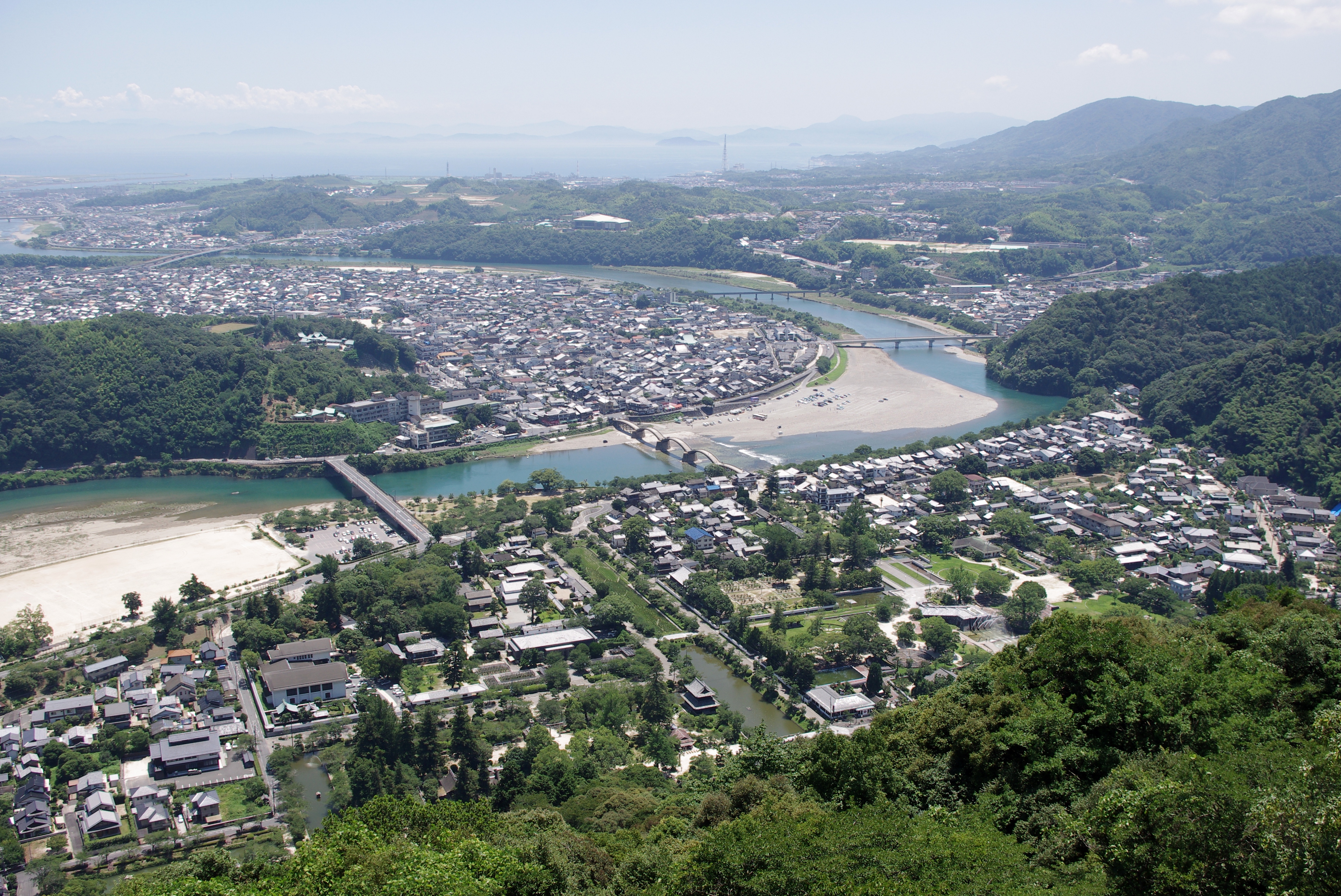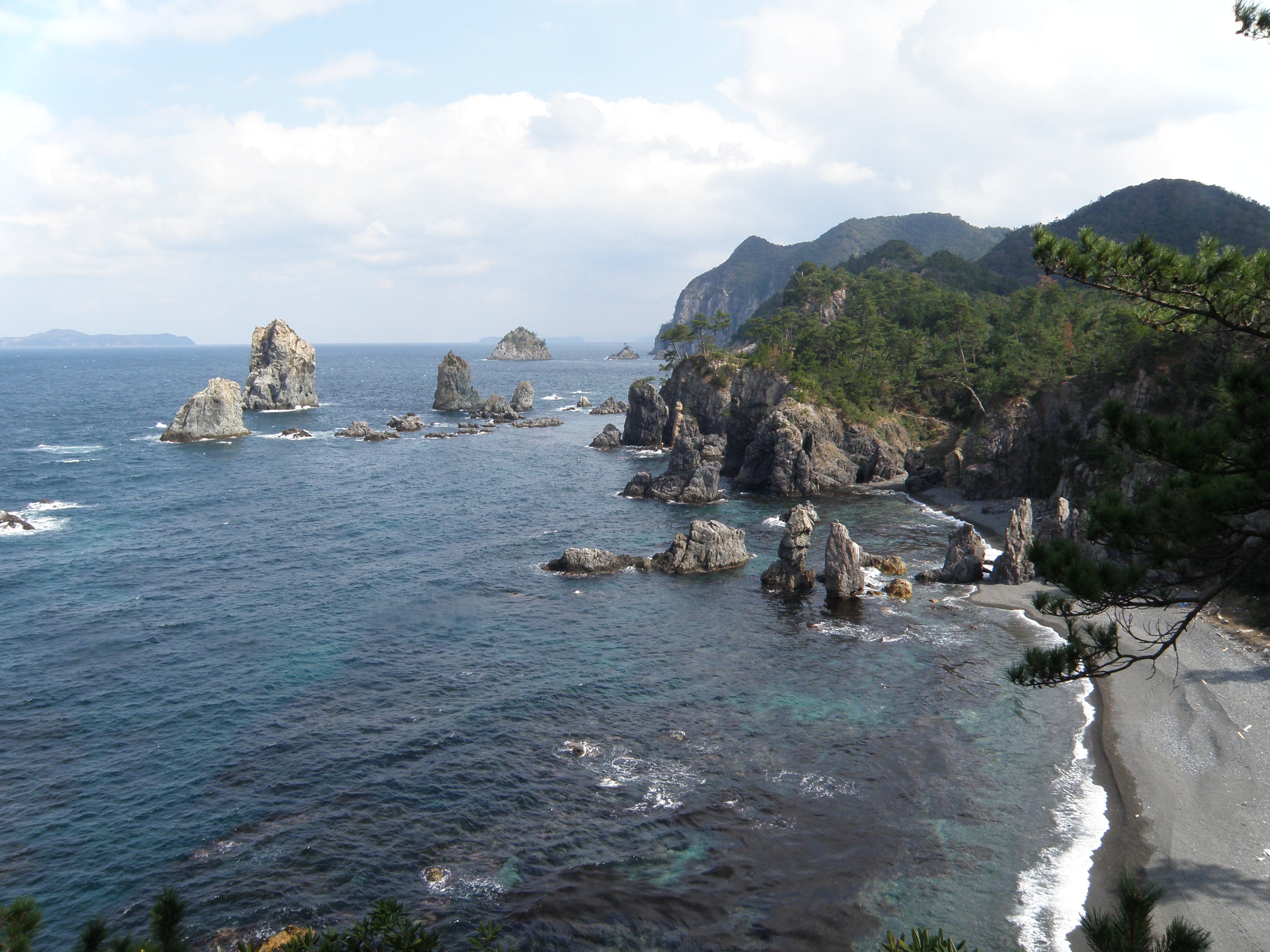|
Amanatsu
or is a yellowish orange citrus hybrid fruit, a group of cultivars of ''Citrus natsudaidai'', which were discovered in 1740 in the Yamaguchi prefecture of Japan. Names ''Amanatsu'' means "sweet summer" in Japanese. In Japan, the fruit is known as , but also colloquially the ''amanatsu'', , , and . Description Natsumikan is about the size of grapefruit and oblate in shape. The fruit contains 12 segments and about 30 seeds. The rough textured fruit is easy to peel and is commonly eaten fresh. It is also used for wide variety of products ranging from marmalades to alcoholic beverages. Cultivation Natsumikan is grown commercially in Japan, notably in Yamaguchi, Kumamoto and Ehime prefecture. The city of Hagi is famous for its natsumikans, particularly when used in natsumikan juice and ice cream. Yamaguchi Prefecture takes such pride in their natsumikan industry that the typically white crash barriers of Japan were changed to a befitting orange. Genetics The natsumikan ... [...More Info...] [...Related Items...] OR: [Wikipedia] [Google] [Baidu] |
Citrus Tristeza Virus
Citrus tristeza virus (CTV) is a viral species of the genus ''Closterovirus'' that causes the most economically damaging disease to its namesake plant genus, ''Citrus''. The disease has led to the death of millions of ''Citrus'' trees all over the world and has rendered millions of others useless for production. Farmers in Brazil and other South American countries gave it the name "tristeza", meaning sadness in Portuguese and Spanish, referring to the devastation produced by the disease in the 1930s. The virus is transmitted most efficiently by the brown citrus aphid. The pathogen CTV is a flexuous rod virus with dimensions of 2000 nm long and 12 nm in diameter. The CTV genome is typically between 19.2 and 19.3 kb long and consists of a single strand of (+)-sense RNA enclosed by two types of capsid proteins. The size of its genome makes CTV one of the largest RNA viruses known. The CTV genome contains 12 open reading frames, which could encode at least 17 proteins ... [...More Info...] [...Related Items...] OR: [Wikipedia] [Google] [Baidu] |
Yamaguchi Prefecture
is a prefecture of Japan located in the Chūgoku region of Honshu. Yamaguchi Prefecture has a population of 1,377,631 (1 February 2018) and has a geographic area of 6,112 km2 (2,359 sq mi). Yamaguchi Prefecture borders Shimane Prefecture to the north and Hiroshima Prefecture to the northeast. Yamaguchi is the capital and Shimonoseki is the largest city of Yamaguchi Prefecture, with other major cities including Ube, Shūnan, and Iwakuni. Yamaguchi Prefecture is located at the western tip of Honshu with coastlines on the Sea of Japan and Seto Inland Sea, and separated from the island of Kyushu by the Kanmon Straits. History Yamaguchi Prefecture was created by the merger of the provinces of Suō and Nagato. During the rise of the samurai class during the Heian and Kamakura Periods (794–1333), the Ouchi family of Suō Province and the Koto family of Nagato Province gained influence as powerful warrior clans. In the Muromachi period (1336—1573), Ouchi Hir ... [...More Info...] [...Related Items...] OR: [Wikipedia] [Google] [Baidu] |
Yamaguchi Prefecture
is a prefecture of Japan located in the Chūgoku region of Honshu. Yamaguchi Prefecture has a population of 1,377,631 (1 February 2018) and has a geographic area of 6,112 km2 (2,359 sq mi). Yamaguchi Prefecture borders Shimane Prefecture to the north and Hiroshima Prefecture to the northeast. Yamaguchi is the capital and Shimonoseki is the largest city of Yamaguchi Prefecture, with other major cities including Ube, Shūnan, and Iwakuni. Yamaguchi Prefecture is located at the western tip of Honshu with coastlines on the Sea of Japan and Seto Inland Sea, and separated from the island of Kyushu by the Kanmon Straits. History Yamaguchi Prefecture was created by the merger of the provinces of Suō and Nagato. During the rise of the samurai class during the Heian and Kamakura Periods (794–1333), the Ouchi family of Suō Province and the Koto family of Nagato Province gained influence as powerful warrior clans. In the Muromachi period (1336—1573), Ouchi Hir ... [...More Info...] [...Related Items...] OR: [Wikipedia] [Google] [Baidu] |
Mikan
''Citrus unshiu'' is a semi-seedless and easy-peeling citrus species, also known as miyagawa mandarin, unshu mikan, cold hardy mandarin, satsuma mandarin, satsuma orange, naartjie, and tangerine. ''Citrus unshiu'' was named after Unshu (Wenzhou), a famous production area of mandarin oranges in China, in the late Edo period of Japan. It is said to have originated in either Japan or China, and because of its name, it is often described as originating in China;The Satsuma Mandarin University of Florida "probable origin in Kyushu islands, Japan or imported from China to Japan." however, due to multiple genetic studies conducted in the 2010s, the theory that the maternal species ... [...More Info...] [...Related Items...] OR: [Wikipedia] [Google] [Baidu] |
Japanese Citrus
A number of citrus fruits are grown in or strongly associated with Japan. Many of these fruits are of Chinese origin, but have been modified or specially bred for cultivation in Japan. Japanese taxonomy Japan usually follows the botanical names of the taxonomy from Tyôzaburô Tanaka, often referred to as the "Tanaka system", giving for each cultivar a separate name no matter if it is pure or a hybrid of two or more species or varieties. While elsewhere it is more popular to classify the genus citrus into species, and further into varieties, and then into cultivars or hybrid. Such a system was created by Walter Tennyson Swingle from Florida and is called the "Swingle system". The different approaches of the two systems lead to partially-overlapping or nested 'species', for example, ''Citrus unshiu'' and ''Citrus tangerina'' (Tanaka) versus ''Citrus reticulata'' (Swingle). Likewise, common terms, like "mikan", do not always align with these taxonomic groups. Japanese citrus ... [...More Info...] [...Related Items...] OR: [Wikipedia] [Google] [Baidu] |
Citrus
''Citrus'' is a genus of flowering trees and shrubs in the rue family, Rutaceae. Plants in the genus produce citrus fruits, including important crops such as oranges, lemons, grapefruits, pomelos, and limes. The genus ''Citrus'' is native to South Asia, East Asia, Southeast Asia, Melanesia, and Australia. Various citrus species have been used and domesticated by indigenous cultures in these areas since ancient times. From there its cultivation spread into Micronesia and Polynesia by the Austronesian expansion (c. 3000–1500 BCE); and to the Middle East and the Mediterranean (c. 1200 BCE) via the incense trade route, and onwards to Europe and the Americas. History Citrus plants are native to subtropical and tropical regions of Asia, Island Southeast Asia, Near Oceania, and northeastern Australia. Domestication of citrus species involved much hybridization and introgression, leaving much uncertainty about when and where domestication first happened. A genomic, phylog ... [...More Info...] [...Related Items...] OR: [Wikipedia] [Google] [Baidu] |
Chronic (medicine)
A chronic condition is a health condition or disease that is persistent or otherwise long-lasting in its effects or a disease that comes with time. The term ''chronic'' is often applied when the course of the disease lasts for more than three months. Common chronic diseases include diabetes, functional gastrointestinal disorder, eczema, arthritis, asthma, cancer, chronic obstructive pulmonary disease, Lyme disease, autoimmune diseases, genetic disorders and some viral diseases such as hepatitis C and acquired immunodeficiency syndrome. An illness which is lifelong because it ends in death is a terminal illness. It is possible and not unexpected for an illness to change in definition from terminal to chronic. Diabetes and HIV for example were once terminal yet are now considered chronic due to the availability of insulin for diabetics and daily drug treatment for individuals with HIV which allow these individuals to live while managing symptoms. In medicine, ''chronic'' condit ... [...More Info...] [...Related Items...] OR: [Wikipedia] [Google] [Baidu] |
Allergic
Allergies, also known as allergic diseases, refer a number of conditions caused by the hypersensitivity of the immune system to typically harmless substances in the environment. These diseases include hay fever, food allergies, atopic dermatitis, allergic asthma, and anaphylaxis. Symptoms may include red eyes, an itchy rash, sneezing, coughing, a runny nose, shortness of breath, or swelling. Note: food intolerances and food poisoning are separate conditions. Common allergens include pollen and certain foods. Metals and other substances may also cause such problems. Food, insect stings, and medications are common causes of severe reactions. Their development is due to both genetic and environmental factors. The underlying mechanism involves immunoglobulin E antibodies (IgE), part of the body's immune system, binding to an allergen and then to a receptor on mast cells or basophils where it triggers the release of inflammatory chemicals such as histamine. Diagnosi ... [...More Info...] [...Related Items...] OR: [Wikipedia] [Google] [Baidu] |
Dermatitis
Dermatitis is inflammation of the skin, typically characterized by itchiness, redness and a rash. In cases of short duration, there may be small blisters, while in long-term cases the skin may become thickened. The area of skin involved can vary from small to covering the entire body. Dermatitis is often called eczema, and the difference between those terms is not standardized. The exact cause of the condition is often unclear. Cases may involve a combination of allergy and poor venous return. The type of dermatitis is generally determined by the person's history and the location of the rash. For example, irritant dermatitis often occurs on the hands of those who frequently get them wet. Allergic contact dermatitis occurs upon exposure to an allergen, causing a hypersensitivity reaction in the skin. Prevention of atopic dermatitis is typically with essential fatty acids, and may be treated with moisturizers and steroid creams. The steroid creams should generally be o ... [...More Info...] [...Related Items...] OR: [Wikipedia] [Google] [Baidu] |
Nagato, Yamaguchi
is a city in Yamaguchi Prefecture, Japan. The city was founded on March 31, 1954. As of October 1, 2016, the city has an estimated population of 34,882 and a population density of 97 persons per km². The total area is 357.92 km². Nagato consists of five smaller towns that were absorbed over the past several years. The towns are Fukawa, Senzaki, Yuya, Heki and Misumi (all from Ōtsu District). Nagato also encompasses Omijima Island and the township of Kayoi. The nearby Omijima Island has many pebbled beaches and scuba diving on one of its northern beaches. The island is reached by a large road bridge which connects the Senzaki Peninsula with the southern edge of the island. There are many onsen on the southern edge of the town in Yumoto with hot springs. History In the Tokugawa era, the area was under the jurisdiction of the Chōshū domain. In the 2017 Japanese general election, 76.25% of Nagato's proportional ballots were cast for either one of the two par ... [...More Info...] [...Related Items...] OR: [Wikipedia] [Google] [Baidu] |
Plantae
Plants are predominantly photosynthetic eukaryotes of the kingdom Plantae. Historically, the plant kingdom encompassed all living things that were not animals, and included algae and fungi; however, all current definitions of Plantae exclude the fungi and some algae, as well as the prokaryotes (the archaea and bacteria). By one definition, plants form the clade Viridiplantae (Latin name for "green plants") which is sister of the Glaucophyta, and consists of the green algae and Embryophyta (land plants). The latter includes the flowering plants, conifers and other gymnosperms, ferns and their allies, hornworts, liverworts, and mosses. Most plants are multicellular organisms. Green plants obtain most of their energy from sunlight via photosynthesis by primary chloroplasts that are derived from endosymbiosis with cyanobacteria. Their chloroplasts contain chlorophylls a and b, which gives them their green color. Some plants are parasitic or mycotrophic and have lost the abilit ... [...More Info...] [...Related Items...] OR: [Wikipedia] [Google] [Baidu] |





